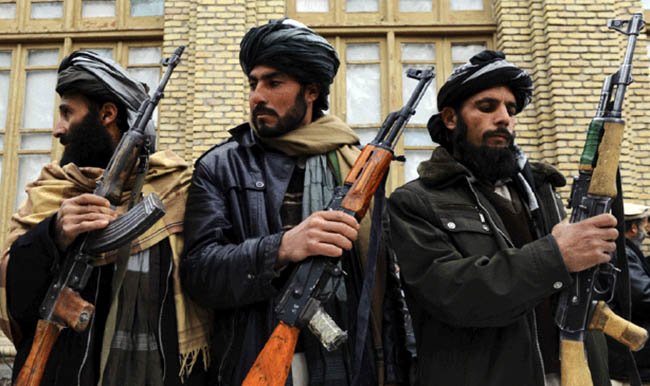The recent spike in militancy has triggered a sense of mistrust between Afghan-Pak officials. Following the attack in Lahore and Sehwan, Islamabad claimed that the militants held sanctuaries in Afghanistan’s soil, and it violated the country’s territorial integrity through firing rocket in Nangarhar province which sparked off a sense of anger among the public. The bonhomie between the two countries melted away and harsh rhetoric between the officials ensued.
On March 8, the militants targeted Daud Khan’s Hospital in Kabul, which left heavy casualties behind. For both the Kabul and Sindh’s attack, the self-proclaimed Islamic State of Iraq and the Levant (ISIL) claimed responsibility. This suggested the fact that the Afghan-Pak nations are left at the mercy of “common enemy” and their blood is spilled indiscriminately. Moreover, ISIL group showed that it was strong enough to carry out deadly attacks in the heart of cities. The attacks on Lal Shahbaz Qalandar’s Shrine and Daud Khan’s Hospital revealed the dangerous ideology of the ISIL fighters – although it is no more a mystery for the world – which pays no heed no humanity and humanitarian law via targeting shrines and hospitals which are to be respected. In other words, attacking shrines and hospitals are curse both from the religious and moral perspectives, if not considering the international law.
In addition to this fact, the ISIL’s loyalists play instrumental role in widening the gap between Kabul and Islamabad. With the current tension and border’s closure, the ISIL fighters will gain stronger confidence and engage in militancy to view the action and reaction between the two neighboring countries. Since the ISIL fighters are mostly mercenaries rather than ideologues, they will use their destructive role as a strategy to cause a rift not only between countries but also nations and ethnic groups. As a result, the ethnic minority groups were targeted and killed systematically both in Afghanistan and Pakistan with the emergence of the ISIL group. Unknown gunmen were stopping the buses and killing ethnic groups on the grounds of their race, color and faith, including women and children, so as to engender a sense of hatred among ethnic groups.
This strategy of warring parties has created a gap between Kabul and Islamabad governments, which were supposed to bring the Taliban to the negotiating table. The mutual relations have been fluctuated between bad and worse. Following the recent meeting between Pakistani PM’s Adviser on Foreign Affairs Sartaj Aziz and Afghan National Security Adviser (NSA) Haneef Atmar, in London, the relations seem to thaw. In a message posted on his Facebook page after Wednesday’s talks, Dr Omar Zakhilwal — the Afghan ambassador to Islamabad — said the London meeting was held “to discuss and agree on a mechanism for genuine bilateral cooperation on fighting terrorism, agree on steps and measures to improve the current tense bilateral relations and mutual trust”. He further wrote, “We are positive that the implementation of the mechanism we agreed upon can inject the needed trust and confidence for constructive forward-looking state-to-state relations and cooperation.”
The dialogue in London was focused on mutual concerns about existence of terrorist sanctuaries on each other’s soil. Soon after the bombing of Lal Shahbaz Qalandar’s shrine, the Pakistan Army had handed over a list of wanted 76 TTP and Jamaat-ul-Ahrar (JuA) terror suspects allegedly residing in hideouts along the Pakistan-Afghan border to Kabul. Subsequently, Afghanistan sent a list of 85 Taliban and Haqqani network ‘commanders’, living in Pakistan and linked any action against TTP and JuA terrorists to “verifiable action” by Pakistan.
It goes without saying that emotional decision regarding political issues will be naïve of a country. Warring parties pose enough threats to the region and the countries will have to adopt effective strategies to tackle the issue rather than exchanging harsh rhetoric or resorting to arms against one another’s territories. In addition to being vulnerable to terrorism, it is believed that political tensions will put pressure on nations. After all, it will compound the challenges.
Secondly, terrorist networks have inflicted heavy casualties upon Afghan and Pakistani nations and scores of soldiers paid sacrifices in combating terrorism. In another item, terrorism has been changed into a highly serious political issue in our era to put pressure on governments and militant fighters even lead proxy wars in some countries.
Shooting the militant fighters on the head will not mitigate the insurgency but all factors and grounds for fundamentalism must be destroyed so as to stop giving birth to radical mentalities. The questions are that where do the militant fighters come from? What are their financial sources? Where are they trained and how are they radicalized? Why do the teenagers show tendency towards the cruel practices and intolerant attitude of terrorist networks?
Hence, the reasons behind radicalism and supporting factors must be scrutinized. It is highly crucial to come to the roots of the issue and eliminate the supporting factors. Since the entire region is susceptible to the venom spew forth by terrorist elements, all countries are to play their parts with bona fide intension. So, the blame game will be in favor of the fighters, who seek to fish in the troubled waters, and will not tackle the issue. It is hoped that the countries join forces to combat terrorism so as to stop it from further destruction.

